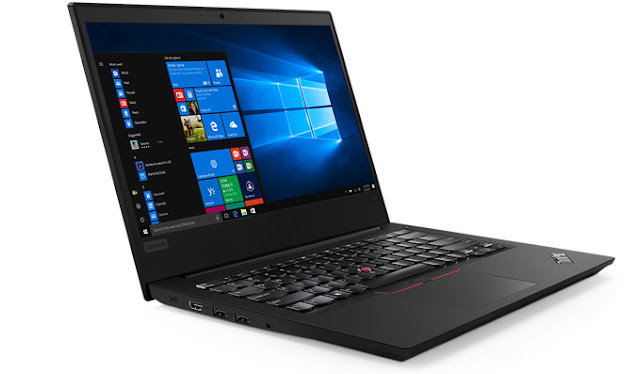Examining the HP Pavilion x360 in more detail (14-inch)
INTRODUCTION
The most recent HP Pavilion x360 is almost as expensive as a full-fledged premium laptop, at $749 (starting at $499), thanks to its powerful CPU, comfortable keyboard, and respectable Bang & Olufsen speakers. If not for its short battery life and lacklustre display, this device would be among the best computers (or at least one of the best 2-in-1 laptops). Regardless, the HP Pavilion x360 is an acceptable laptop in its price range.
Cost and Available Customizations
Prices start at $499 for the base Pavilion x360 configuration, which includes a Core i3-8145U CPU, 8GB of RAM, a 128GB SSD, and a 1366x768 display. The $899 version has a Core i5-8265U processor, 12GB of RAM, a 256GB solid-state drive, and a 1920 x 1080 display.
The model of the Pavilion x360 I tried retails for $749 and features a 128GB solid-state drive (SSD), 8GB of RAM, a 1920x1080 display, and an Intel Core i5-8265U CPU.
Design
The Pavilion x360's lid is painted a welcoming gold, and an HP insignia is etched in the centre. The Pavilion x360 is encased in an hourglass shape formed by the outwardly curved edges of the canopy and the inwardly curved edges of the deck. The Pavilion insignia can also be found on the laptop's hinge.
When you open up the Pavilion x360, you'll notice a slightly more silver hue on the deck, a cutout for the keypad in the middle, and a vent grill for the Bang & Olufsen speakers above. To the right of the trackpad is a fingerprint scanner. The display's borders, thankfully, aren't too thick.
The Pavilion x360's top and bottom halves don't quite align when folded into tent and tablet modes, respectively. However, it remained put thanks to the bottom's magnetic properties.
The Pavilion x360 weighs in at 3.6 pounds and measures 12.7 by 8.8 by 0.8 inches, making it significantly larger than its competitors. In terms of size and weight, the Huawei MateBook D measures 12.7 inches by 8.7 inches by 0.6 inches and weighs 3.4 pounds, while the Acer Spin 3 measures 13.2 inches by 9.1 inches by 0.8 inches and weighs 3.6 pounds. With its measurements of 11.9 by 7.4 by 0.7 inches and its weight of 2.7 pounds, the Asus ZenBook 13 UX333FA is a more portable and lightweight alternative.
Ports
The left side of the Pavilion x360 features a number of ports, including a USB 3.0 port, a headphone socket, the power button, and a security-lock slot.
The power connector, HDMI connection, USB 3.0 port, USB Type-C port, and SD card slot can all be found on the right side.
Display
The 14-inch, 1920 x 1080 panel on the Pavilion x360 is uninspiring. The screen's glossy surface is distracting, despite the fact that it's reasonably bright.
In the Jumanji: Next Level teaser playing on the Pavilion x360's screen, Karen Gillian's red top appeared depleted. I could make out most of the furniture in the room where Gillian was kicking arse, but only from a specific position due to the strong glare. I was able to make out the stitching on Jack Black's headwear thanks to the high resolution of the screen.
Our colorimeter showed that the Pavilion x360's display only reproduced 61% of the sRGB colour space, making it less vibrant than the 76% average of standard laptops and significantly less vibrant than the Spin 3 (69%), the MateBook D (73%), and the ZenBook 13 (115%).
The Pavilion x360 has a screen with a brightness of 261 nits, which is brighter than the category average (253 nits), the Spin 3 (237 nits), the MateBook D (230 nits), and the ZenBook 13 (220 nits). (225 nits).
Combination Keyboard/Touchpad
The keypad on the Pavilion x360 is a joy to type on. The buttons aren't particularly quick, but they're satisfying to press and have a good deal of travel before they bottom out.
On the 10FastFingers.com typing test, I cranked out 74 wpm, which is quicker than my usual 70 wpm. The actuation force was a hefty 70 grammes, and the travel distance of the keys was 1.4 millimeters, right on the border of our favoured 1.5 to 2.0 mm range.
As I sketched a rudimentary picture of a sunset on the Pavilion x360's touch screen, it responded appropriately. (a.k.a. five blue lines on top, five green lines on the bottom, and an orange circle at the center - perfection).
The 4.3 x 2.1-inch touchpad has a semi-matte texture and works just fine, though it is not as comfortable as the ones on the EliteBook series. Pad movements in Windows 10, such as three-finger tabbing and two-finger scrolling, worked smoothly thanks to the included Windows Precision drivers.
Audio
Surprisingly high-quality for a sub-$800 notebook, the Pavilion x360 features top-firing Bang & Olufsen speakers. The speakers could have been louder, but Missio's "I See You" was still audible throughout the entire workplace. I was immediately drawn in by the beginning vocals and keyboard notes. And the bass was so thick that it weighed me down when the drums slowed down. I've heard worse speakers on computers costing more than $2,000, so there's room for improvement.
The Bang & Olufsen audio software improves the sound quality by providing Music, Movie, and Voice modes. There's an equaliser and controls for bass, treble, and dialogue intelligibility within those parameters.
Performance
The Pavilion x360, powered by an Intel Core i5-8265U processor and 8GB of RAM, easily handled 30 Chrome tabs at once while streaming four 1080p movies on YouTube.
The Pavilion x360 got 12,495 on Geek bench 4.1's overall performance test, which is slightly higher than the 9,482 average for mainstream laptops. It lagged behind the Core i5-8250U (13,203) and the Core i5-8265U (15,110) of the Spin 3 and the Zen Book 13, but it outpaced the AMD Ryzen 5 2500U of the Mate Book D. (8,845).
Graphics
· reliable functionality
· ergonomic keypad
· high-quality sound
· Poor battery life; uninspiring screen
· Powered-Up Time






Comments
Post a Comment